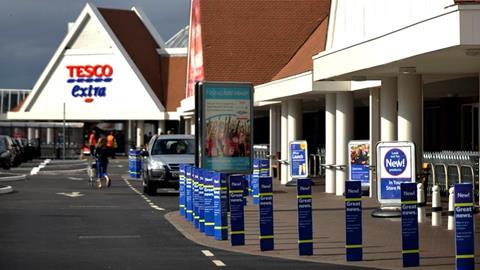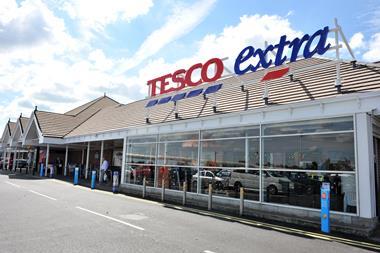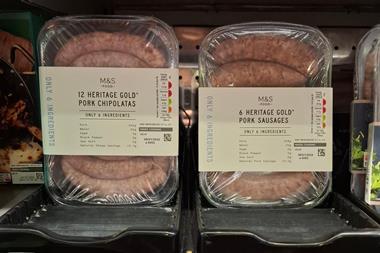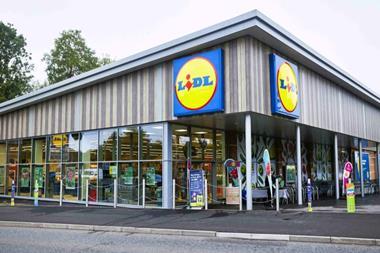Tesco’s results prompted a supermarket share sell-off yesterday as investors focused on its profits outlook amid surging inflation and worsening consumer conditions. However, there were plenty of reasons to be (cautiously) optimistic for the UK’s biggest retailer despite the gloom.
For one thing, its latest annual results are further proof the new management team, led by Ken Murphy, have taken a much-improved business (thanks, Dave) and fine-tuned it into an even more formidable operator.
Revenues are up, despite tough comparisons from 2021, and pre-tax profits soared 220% to over £2bn, as it gained market share and outperformed rivals.
Its understandable cautiousness over the cost of living crisis is also balanced by the knowledge that the country is emerging from the pandemic.
That’s been particularly good news for Booker, its wholesale arm, where it’s not only built on its strong growth on the symbol side (adding 283 new retailers), but benefited from the return of catering and foodservice, where its “best in class offer” according to Murphy, was boosted by a number of new contract wins. Sales were up 15.3% year on year and 11.9% over two years.
The end of the pandemic also has positive repercussions for its urban stores. And Murphy painted a far more nuanced picture of the situation than the sell-off would have you believe.
Read more:
-
Tesco profits soar but supermarket warns over battle to keep prices low as inflation rages
-
Tesco’s approach to inflation: a little bit less and a little bit later
-
Tesco announces 5.8% pay deal and major changes to job roles
-
Supermarket pay: a game where the stakes keep getting raised
“At the same time as we’re seeing cost pressures come through on the everyday budgets of our customers, we’re also seeing the effects of the unwind from the pandemic which are going the other way,” he explained.
“We’re trying to discern what behaviours are driven by the lifting of Covid-19 restrictions, going back to the office more frequently, people traveling more, and what behaviours are starting to emerge as some of those energy price increases start to bite.
“It is too early to assess because the first big jump in energy bills are just hitting customers now.”
It’s also the case that Tesco is, as Murphy says, “in really great shape” to deal with the crisis.
On price, it’s in its strongest UK position in six years, Murphy claimed, with its shelf price index improved by 70bps, thanks to a combination of its Clubcard Prices, extended Aldi Price Match and the relaunch of Low Everyday Prices on 1,600 lines.
Online, though sales have fallen since the peak of the pandemic, online share is up 142bps to 34.8%, and it’s getting picking rates four times higher than store-based picking at its urban fulfilment centres, with a fifth UFC set to open in Glasgow this month. The rollout will have a “meaningful impact on dotcom profitability over time,” Murphy predicted.
And Tesco is also pushing on into the new world with plans to expand its rapid delivery service Whoosh from 200 to 600 stores, while 100 new click & collect sites have opened.
Of course, all that is not to say Tesco is immune to the mounting inflationary pressures plaguing consumers and suppliers alike.

Shares fell 5% yesterday to the lowest levels seen since October – with Sainsbury’s, Ocado and M&S also dragged lower – as Murphy forecast operating profits would come in between £2.4bn and £2.6bn.
And while food inflation remained below the depressing overall headline inflation rate of 7% for March announced by the ONS today, at 5.9% it is still at the highest level since September 2011, with staples such as bread, milk and fruit all more than 5% higher.
A fall in profits may be bad for Tesco investors, but it should reassure shoppers as it signals the supermarket is willing to invest more to keep its prices as sharp as possible to keep a resurgent Aldi and Lidl at bay.
It also shouldn’t be lost in all the gloom and doom that a bit of inflation is actually welcome for food retailers as it effortlessly lifts sales. Cash-strapped consumers may also be minded to cut back on meals out or lavish spending elsewhere and opt for a few more affordable indulgences in their weekly shops.
The danger is if basket sizes shrink, with shoppers trading down too much into value ranges or jumping ship to make savings with the discounters, not to mention input costs for suppliers and the retailers themselves continuing to spiral out of control.
But Tesco’s balance sheet is enviable. Beyond the headline numbers a metric that’s had little attention is free cashflow and that was up a whopping 70% to £2.3bn. It helped net debt fall 12% to £10.5bn while dividends hit an eight-year high of 10.9p a share, up 19% on the prior year (not to mention another £750m share buyback planned). So it’s not unconfident. And the strength of its balance sheet should give it the firepower to easily outprice heavily leveraged Asda and Morrisons, who have one hand tied behind their backs as PE owners remain distracted with financial engineering associated with the recent takeovers.
It all amounts to a potentially fortuitous set of circumstances.
If Tesco and Murphy can hold their nerve in the middle of this extraordinarily volatile trading environment, it could spell big trouble for its traditional rivals and take the sting out of the discounters’ tail at the same time.
Or as analyst Clive Black put it: “If Tesco catches a cold, others will go down with influenza.”




















No comments yet